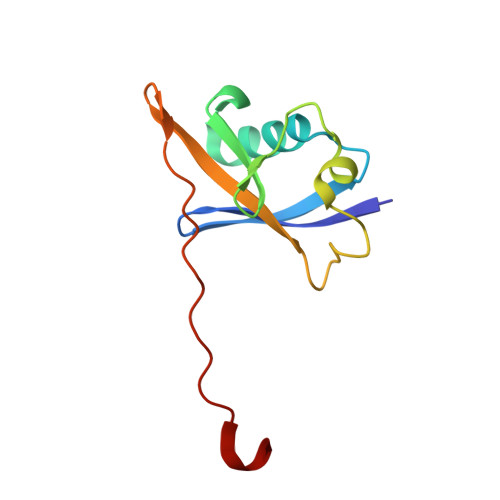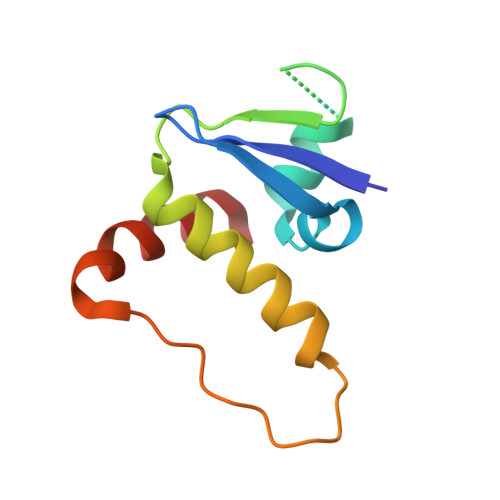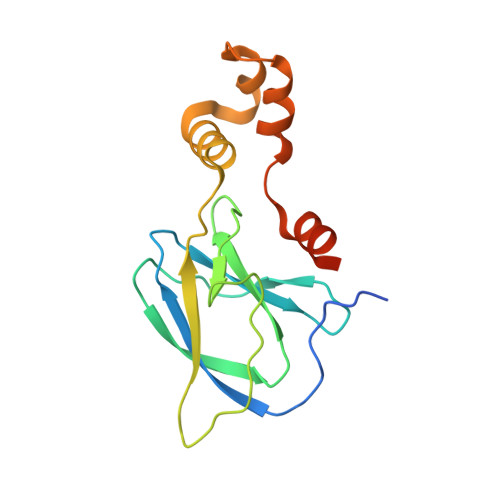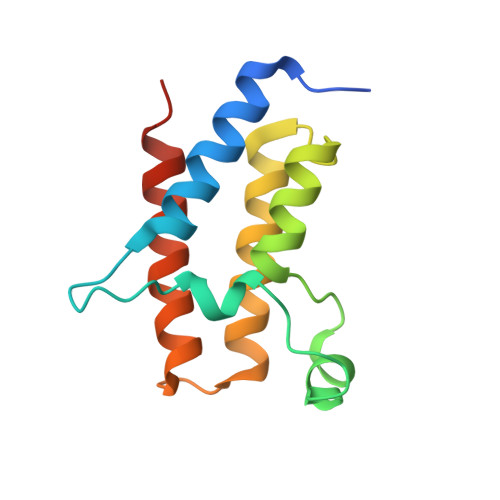A selective and orally bioavailable VHL-recruiting PROTAC achieves SMARCA2 degradation in vivo.
Kofink, C., Trainor, N., Mair, B., Wohrle, S., Wurm, M., Mischerikow, N., Roy, M.J., Bader, G., Greb, P., Garavel, G., Diers, E., McLennan, R., Whitworth, C., Vetma, V., Rumpel, K., Scharnweber, M., Fuchs, J.E., Gerstberger, T., Cui, Y., Gremel, G., Chetta, P., Hopf, S., Budano, N., Rinnenthal, J., Gmaschitz, G., Mayer, M., Koegl, M., Ciulli, A., Weinstabl, H., Farnaby, W.(2022) Nat Commun 13: 5969-5969
- PubMed: 36216795
- DOI: https://doi.org/10.1038/s41467-022-33430-6
- Primary Citation of Related Structures:
7Z6L, 7Z76, 7Z77, 7Z78 - PubMed Abstract:
Targeted protein degradation offers an alternative modality to classical inhibition and holds the promise of addressing previously undruggable targets to provide novel therapeutic options for patients. Heterobifunctional molecules co-recruit a target protein and an E3 ligase, resulting in ubiquitylation and proteosome-dependent degradation of the target. In the clinic, the oral route of administration is the option of choice but has only been achieved so far by CRBN- recruiting bifunctional degrader molecules. We aimed to achieve orally bioavailable molecules that selectively degrade the BAF Chromatin Remodelling complex ATPase SMARCA2 over its closely related paralogue SMARCA4, to allow in vivo evaluation of the synthetic lethality concept of SMARCA2 dependency in SMARCA4-deficient cancers. Here we outline structure- and property-guided approaches that led to orally bioavailable VHL-recruiting degraders. Our tool compound, ACBI2, shows selective degradation of SMARCA2 over SMARCA4 in ex vivo human whole blood assays and in vivo efficacy in SMARCA4-deficient cancer models. This study demonstrates the feasibility for broadening the E3 ligase and physicochemical space that can be utilised for achieving oral efficacy with bifunctional molecules.
Organizational Affiliation:
Boehringer Ingelheim RCV GmbH & Co KG, Vienna, Austria.





















